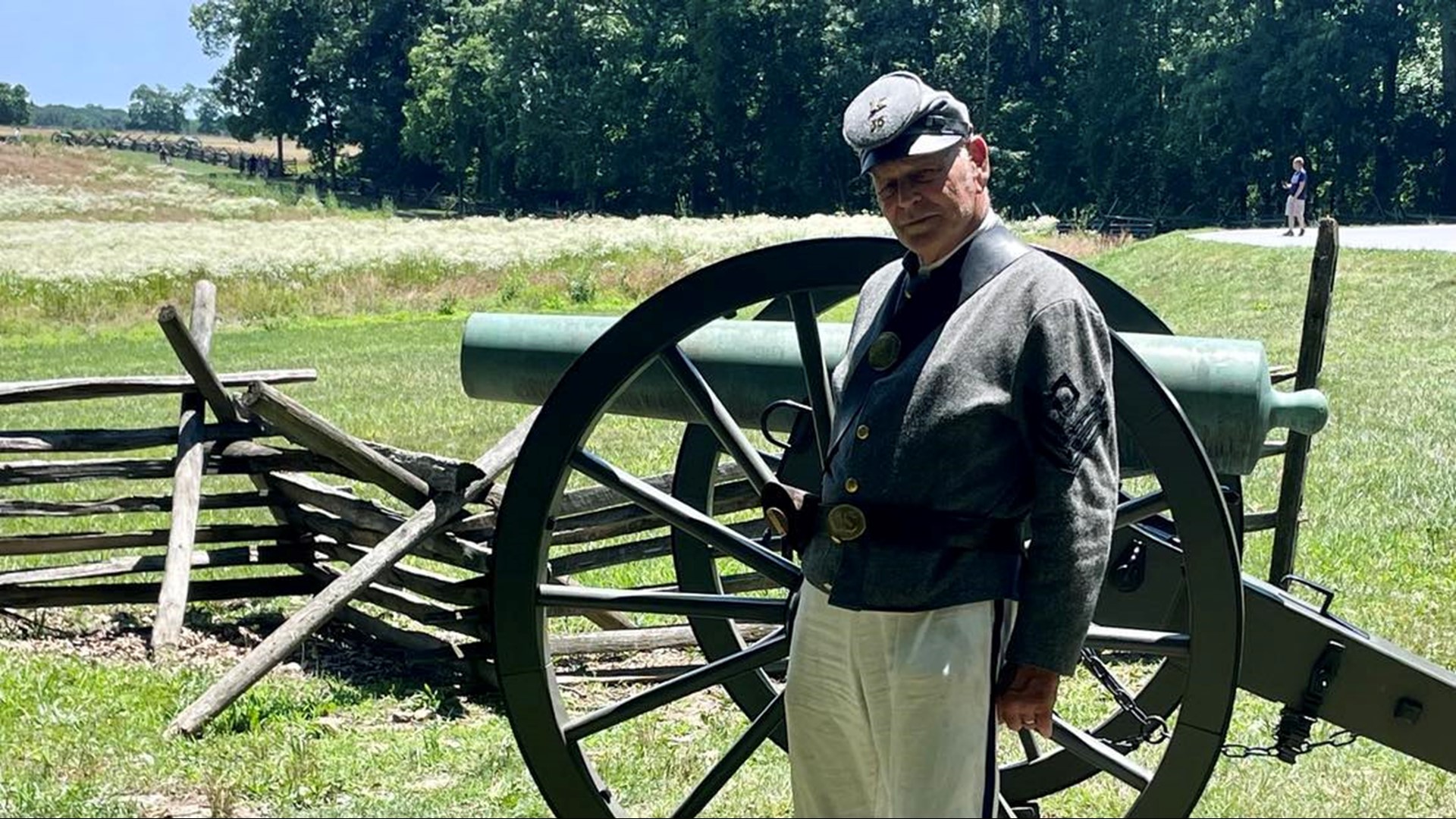GETTYSBURG, Pa. — At 2 p.m. on July 3, 1863, it was a muggy 87 degrees in Gettysburg, Pa., just as Pickett’s Charge was ordered by Confederate General Robert E. Lee against Union soldiers.
At 2 p.m. on July 3, 2023, it was 85 degrees and humid in Gettysburg, as the national park observed the 160th anniversary of the battle there.
The symmetry wasn’t lost on Civil War reenactor Thomas Lee Jessee, who plays Robert E. Lee. Clad in the same wool/cotton blend jacket that Confederate soldiers wore, Jessee tried to stand in the shade as he educated tourists and posed with them for pictures.
Throughout the Civil War, heat was a problem for both the Confederate and Union armies, especially on long marches.
“We had men dropping on the side all the way into Pennsylvania because of the heat and other things, too,” Jessee said, referencing Robert E. Lee's troops marching across the Potomac River toward Gettysburg. “What they might have been eating they had issues, or they were just exhausted.”
Jessee said though uncomfortable by modern standards, Civil War uniforms weren’t as suffocating as they might seem. Cotton helps wick away sweat and wool helps it evaporate quickly, creating a cooling effect, he said.
“They did have ways of keeping cool. Our ancestors weren’t that crazy,” Jessee said.
As tourists from around the country flocked to Gettysburg on the anniversary of the battle, many got to experience firsthand how soldiers there may have felt.
“I cannot imagine. It is stifling,” said Melanie Bonin, who came with her family from Greene County to visit the national park.
That experience is important, Jessee said, because it helps people viscerally connect to a difficult time in America’s history, and apply the lessons learned to modern day.
“War came because we forgot we were all Americans. Here are Americans on this side of the field. There are Americans on that side of the field,” Jessee said. “That’s part of our history and we need to learn from it. You shouldn’t love the history or hate it. You just take the history and learn lessons from it.”

